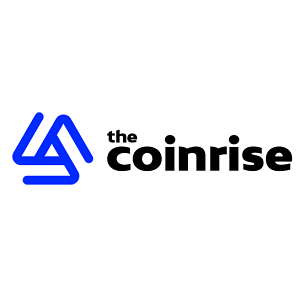Bitcoin Potential: BlackRock Exec Reveals BTC Could Skyrocket Past Gold
10 min read
BitcoinWorld Bitcoin Potential: BlackRock Exec Reveals BTC Could Skyrocket Past Gold In the ever-evolving landscape of finance, where traditional assets meet digital innovation, comments from major players carry significant weight. A recent statement from a top executive at BlackRock, the world’s largest asset manager, has reignited discussions about the future trajectory of digital assets, specifically focusing on Bitcoin potential compared to traditional safe havens like gold. This isn’t just another opinion; it’s a perspective from within the walls of an institution increasingly involved in the crypto space. What Did the BlackRock Exec Really Say About BlackRock Bitcoin? At the Bitcoin Conference 2025 in Las Vegas, Robert Mitchnick, Managing Director at BlackRock, shared a view that has resonated throughout the crypto community. According to a report by Bitcoin Magazine on X, Mitchnick stated unequivocally that “Bitcoin has much higher upside than gold.” This simple yet powerful assertion from a representative of a firm that recently launched one of the most successful spot Bitcoin ETFs (IBIT) underscores a notable shift in how traditional finance views the premier cryptocurrency. Why is this particular statement significant? BlackRock manages trillions of dollars in assets. Their strategic decisions and public commentary often signal broader trends in institutional investment. Mitchnick’s role as a Managing Director suggests he is involved in key areas, likely including the firm’s digital asset initiatives. Therefore, his comparison isn’t merely speculative; it’s likely informed by internal analysis and market perspective from a firm deeply engaged with both traditional and digital asset classes. For years, gold has been the go-to asset for investors seeking a store of value and a hedge against inflation and economic uncertainty. Bitcoin emerged with a similar narrative, often dubbed “digital gold.” The debate about which asset serves this purpose better, and more importantly, which offers greater growth prospects, has been central to crypto discussions. Mitchnick’s comment directly addresses the growth potential, favoring Bitcoin. Why is the “Bitcoin vs Gold” Debate Heating Up? The comparison between Bitcoin vs Gold is fundamental to understanding Bitcoin’s investment thesis, especially for traditional investors. Both assets are viewed as scarce, decentralized stores of value outside the direct control of governments or central banks. However, their characteristics and market dynamics differ significantly, leading to varying perspectives on their future performance. Let’s look at some key points of comparison: Scarcity and Supply: Gold supply increases slowly through mining, with no absolute cap known. Bitcoin has a fixed supply cap of 21 million coins, enforced by its protocol. This verifiable, absolute scarcity is a core argument for its long-term value potential. Divisibility and Portability: Bitcoin is highly divisible (down to 8 decimal places, called satoshis) and instantly portable across the globe with minimal cost (relatively, depending on network conditions). Gold is less divisible and costly to transport and store securely. Verifiability: The authenticity of Bitcoin can be cryptographically verified on the blockchain. Verifying gold often requires physical inspection and expertise. Market Size and Liquidity: The gold market is vastly larger and more mature than the Bitcoin market. However, Bitcoin’s market depth and liquidity have grown dramatically, particularly with the advent of spot ETFs. Volatility: Historically, Bitcoin has been far more volatile than gold. This volatility presents both higher risk and potentially higher reward, contributing to the “higher upside” argument. Institutional Adoption: While institutions have held gold for centuries, their adoption of Bitcoin is a relatively new but accelerating trend. The launch of spot Bitcoin ETFs in the U.S. is a prime example of increasing institutional access and interest. Here’s a simplified comparison table: Feature Bitcoin (BTC) Gold (XAU) Supply Cap Fixed (21 million) No fixed cap (mined) Nature Digital Physical Divisibility Highly divisible (Satoshi) Less divisible Portability Easy, Global Difficult, Costly Verification Cryptographic (Blockchain) Physical inspection Volatility High Low to Moderate Institutional Adoption Growing Rapidly Established Mitchnick’s comment suggests that despite gold’s long history, the unique digital properties and market dynamics of Bitcoin position it for potentially greater future appreciation, largely because it is starting from a smaller base and benefits from network effects and increasing digital integration. Exploring Bitcoin’s Potential: Is Skyrocketing Price Growth Possible? The idea of significant Bitcoin price potential is central to the investment thesis for many holders. Several factors contribute to the belief that Bitcoin’s price could see substantial future growth, perhaps even dwarfing gold’s historical returns. Supply Halvings: Approximately every four years, the rate at which new Bitcoin enters circulation is cut in half. This programmed supply shock, while demand either remains constant or increases, has historically preceded significant price rallies. Increasing Demand: Demand is growing from multiple fronts – individual retail investors, corporations adding BTC to their balance sheets, and perhaps most significantly, large financial institutions offering Bitcoin products or investing directly. Institutionalization: The launch of easy-to-access investment vehicles like spot Bitcoin ETFs opens the door for a massive pool of capital that was previously hesitant or unable to invest in Bitcoin directly. This influx of institutional money is a powerful potential catalyst. Macroeconomic Landscape: In an era of potential inflation, currency devaluation, and economic uncertainty, the narrative of Bitcoin as a scarce, decentralized store of value becomes more appealing to a wider audience. Network Effects: As more users, developers, and businesses adopt Bitcoin, its utility and value as a network increase, creating a positive feedback loop. Comparing this to gold, gold’s price movements are typically more tied to inflation fears, currency strength, and jewelry/industrial demand. While it serves its purpose as a stable store of value, the structural factors driving potential exponential growth in Bitcoin (like halvings and rapid technological adoption) are simply not present in the gold market. Mitchnick’s perspective aligns with the view that Bitcoin, being a younger, more dynamic asset class with unique supply dynamics and growing global digital adoption, has a longer runway for appreciation than the established, mature gold market. The percentage growth required for Bitcoin to reach a market capitalization comparable to gold’s is significantly higher, implying substantial price increases per coin if that convergence were to occur. How is Institutional Bitcoin Adoption Shaping the Market? The trend of institutional Bitcoin adoption is arguably the most significant development in the crypto space over the past few years. What started with a few pioneering corporate treasuries has expanded dramatically, bringing legitimacy, liquidity, and new capital into the market. BlackRock itself is a prime example. Their iShares Bitcoin Trust (IBIT) quickly became one of the most successful ETF launches in history by assets under management. This wasn’t just about offering a product; it represented BlackRock putting its significant weight and reputation behind making Bitcoin accessible to a vast network of financial advisors and their clients. Beyond ETFs, institutions are engaging in various ways: Direct Investment: Some corporations and investment funds are holding Bitcoin directly on their balance sheets. Custody Solutions: The development of robust, regulated custody solutions has made it safer and more feasible for institutions to hold significant amounts of Bitcoin. Derivatives Markets: Growth in Bitcoin futures and options markets provides institutions with tools for hedging and speculation. Lending and Borrowing: Institutional-grade platforms for Bitcoin lending and borrowing are emerging. Venture Capital: Significant VC funding continues to pour into companies building infrastructure and services in the crypto space. The impact of this institutional embrace is multifaceted. It increases market liquidity, potentially reduces long-term volatility (as institutional holders tend to be long-term players), builds credibility for the asset class, and integrates Bitcoin further into the global financial system. When executives from firms like BlackRock speak positively about Bitcoin, it reinforces this trend and can influence other institutions and traditional investors. What Does This Mean for the Overall Crypto Market Outlook? The positive commentary from a BlackRock executive about Bitcoin’s potential has broader implications for the entire crypto market outlook . Bitcoin often acts as the gateway asset for institutions and new investors entering the space. Increased confidence and investment in Bitcoin can have a halo effect on other cryptocurrencies and the broader digital asset ecosystem. A positive outlook for Bitcoin suggests continued interest in the underlying technology (blockchain) and other digital assets. It validates the idea that digital assets are evolving from a niche interest to a recognized asset class with a place in diversified portfolios. However, the crypto market outlook is not without its challenges: Regulatory Uncertainty: The regulatory environment for cryptocurrencies remains fragmented and uncertain across different jurisdictions. Clarity is needed for broader institutional comfort. Market Volatility: While institutional money might temper volatility over time, the crypto market is known for sharp price swings driven by sentiment, news, and macroeconomic factors. Technological Risks: While Bitcoin’s protocol has proven robust, risks related to exchanges, custody providers, or potential future technological shifts exist. Global Economic Factors: The performance of crypto assets can be influenced by interest rates, inflation, and global economic stability, just like traditional assets. Despite these challenges, the increasing institutional validation, highlighted by comments like Mitchnick’s, points towards a future where digital assets play a more prominent role in global finance. The focus remains heavily on Bitcoin as the leading institutional-grade asset, but the infrastructure and understanding built around it benefit the wider market. Weighing the Benefits and Challenges of Bitcoin Investment Investing in Bitcoin, especially with the perspective of its high growth potential compared to assets like gold, comes with a unique set of benefits and challenges. It’s crucial for any potential investor to understand both sides. Benefits: High Growth Potential: As highlighted by the BlackRock executive, the potential for significant price appreciation due to limited supply, increasing demand, and network effects is a major draw. Decentralization: Bitcoin operates on a decentralized network, meaning it is not controlled by any single entity, offering a degree of autonomy from traditional financial systems. Store of Value: Its fixed supply and resistance to inflation make it an attractive potential store of value, particularly in uncertain economic times. Global Accessibility: Bitcoin can be sent and received anywhere in the world with an internet connection, offering financial inclusion and ease of transfer. Transparency: All Bitcoin transactions are recorded on a public ledger (the blockchain), providing a level of transparency not found in traditional finance. Challenges: Extreme Volatility: Bitcoin’s price can experience dramatic swings in short periods, leading to significant risk of loss. Regulatory Uncertainty: The lack of clear, consistent regulation globally creates legal and operational risks. Security Risks: While the network is secure, individual investors face risks from exchange hacks, phishing scams, and losing private keys. Complexity: Understanding the technology, market dynamics, and secure storage methods can be challenging for newcomers. Market Manipulation: Although decreasing with institutional involvement, the market can still be susceptible to manipulation. The decision to invest should weigh the potential for high returns against these considerable risks. The perspective from BlackRock emphasizes the upside, but prudent investors must consider the full picture. Actionable Insights for Navigating the Bitcoin Landscape Given the evolving landscape and the insights from major financial players, what steps can individuals take? Educate Yourself: Understand how Bitcoin works, its history, market cycles, and the technology behind it. Don’t rely solely on headlines or single opinions. Define Your Goals and Risk Tolerance: Bitcoin is not suitable for everyone. Assess if its volatility and long-term potential align with your personal financial goals and comfort level with risk. Start Small: If you decide to invest, consider starting with a small amount you are comfortable losing. Consider Your Investment Method: Decide whether direct ownership (managing your own keys) or using regulated products like ETFs (offering convenience and familiar structures) is better suited for you. Prioritize Security: If holding Bitcoin directly, learn about and use secure storage solutions like hardware wallets. Use strong passwords and two-factor authentication on exchanges. Stay Informed: Follow reliable news sources and analysis on the crypto market, regulatory developments, and technological advancements. Think Long-Term: Many investors view Bitcoin as a long-term asset. Short-term price swings can be significant, but the long-term trend has historically been upward. Comments from figures like Robert Mitchnick provide valuable context from the institutional world, but individual research and a clear strategy are paramount. Conclusion Robert Mitchnick’s statement that Bitcoin offers greater price growth potential than gold is a powerful indicator of how perspectives on digital assets are shifting within traditional finance. Coming from a leader at BlackRock, a firm deeply embedded in both traditional markets and increasingly in the crypto space, the comment underscores a growing institutional belief in Bitcoin’s future. The debate between Bitcoin vs Gold as a store of value continues, but the focus is clearly moving towards which asset offers superior potential returns in the digital age. Bitcoin’s unique characteristics—fixed supply, digital nature, growing institutional adoption, and dynamic market cycles—position it differently from the mature gold market. While the path forward for Bitcoin and the broader crypto market outlook involves navigating significant volatility and regulatory hurdles, the increasing validation from major financial institutions suggests that digital assets are here to stay and are being seriously considered for their long-term growth prospects. Investors should view such comments as valuable insights, but always couple them with thorough personal research and a clear understanding of the inherent risks involved in this exciting, yet unpredictable, market. To learn more about the latest crypto market trends, explore our article on key developments shaping Bitcoin price action. This post Bitcoin Potential: BlackRock Exec Reveals BTC Could Skyrocket Past Gold first appeared on BitcoinWorld and is written by Editorial Team

Source: Bitcoin World


